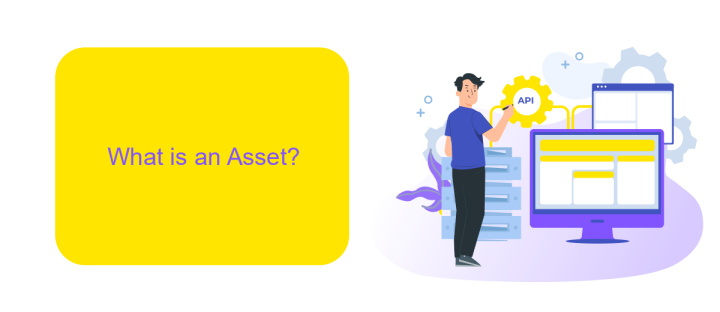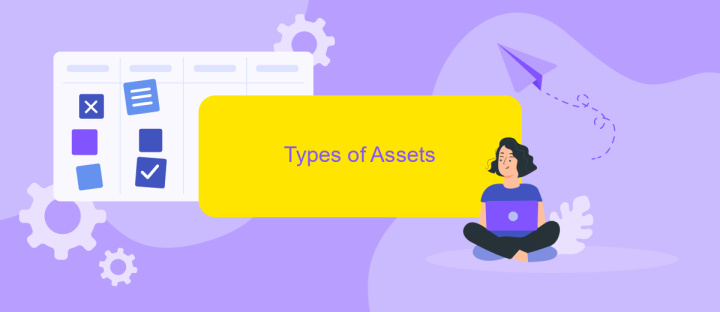What is Asset in UiPath
An asset in UiPath is a crucial component for managing and storing values that can be used across different automation processes. These values can range from credentials and configuration settings to more complex data structures. By centralizing these resources, UiPath ensures consistency, security, and ease of maintenance, making automation workflows more efficient and reliable.
# Introduction
In the realm of robotic process automation (RPA), UiPath stands out as a powerful tool that helps organizations streamline their workflows. One of the key components in UiPath is the concept of an asset. Assets in UiPath are used to store and manage data that can be shared across different automation processes, making the automation more dynamic and adaptable.
- Centralized data management
- Enhanced security and access control
- Improved scalability of automation projects
For those looking to integrate UiPath with other services, tools like ApiX-Drive offer seamless integration capabilities. ApiX-Drive allows you to connect UiPath with a variety of applications and services, ensuring that your automation processes are as efficient and interconnected as possible. This makes it easier to manage data and automate tasks across multiple platforms, enhancing the overall efficiency of your RPA efforts.
What is an Asset?

An asset in UiPath is a centralized resource that can be used to store and manage information that robots need to perform their tasks. Assets can include credentials, connection strings, file paths, or any other data that needs to be securely stored and accessed by automated processes. By managing assets in UiPath Orchestrator, you ensure that sensitive information is handled securely and can be updated without modifying the robots themselves.
Integrating assets with external services can enhance automation capabilities. For instance, using a service like ApiX-Drive, you can seamlessly connect UiPath with various applications and platforms, facilitating the transfer and synchronization of data. ApiX-Drive enables you to set up integrations without coding, making it easier to automate workflows across different systems. This ensures that your robots have access to the most current and accurate information, thereby improving efficiency and reducing errors in your automated processes.
Types of Assets

In UiPath, assets are crucial components that help manage and store various types of information securely and efficiently. They are used to store credentials, configurations, and other data that can be shared across different automation processes. Understanding the different types of assets can significantly enhance your automation projects.
- Text Assets: These are used to store plain text information, such as URLs, file paths, or any other string data that your automation might need.
- Integer Assets: These store integer values, which can be useful for counters, configuration settings, or any other numeric data.
- Boolean Assets: These store true/false values, making them ideal for toggling features or settings within your automation processes.
- Credential Assets: These are used to store sensitive information like usernames and passwords securely. They ensure that such data is encrypted and accessible only to authorized automation processes.
For those looking to integrate UiPath with other services, tools like ApiX-Drive can be invaluable. ApiX-Drive simplifies the integration process by allowing you to connect various applications and automate data transfer without extensive coding knowledge. This can enhance the functionality of your UiPath assets by ensuring seamless data flow between different systems.
Benefits of Using Assets

Using assets in UiPath provides a centralized way to manage variables and credentials, which enhances security and simplifies maintenance. This approach allows developers to store and retrieve information without hardcoding sensitive data into workflows, thus improving overall security posture.
One of the key advantages of using assets is the ability to update values without modifying the automation scripts. This means that changes can be made in a single location, reducing the risk of errors and ensuring consistency across different processes. Additionally, assets can be shared among multiple workflows, promoting reusability and standardization.
- Centralized management of variables and credentials
- Enhanced security by avoiding hardcoding sensitive data
- Ease of updates without modifying scripts
- Consistency and standardization across workflows
- Improved reusability of common data
For those looking to integrate UiPath with other applications, using a service like ApiX-Drive can further streamline the process. ApiX-Drive allows for seamless integration and automation, enabling businesses to connect various systems and automate data flows efficiently. This enhances the overall functionality and scalability of automation projects.
# Conclusion
In conclusion, understanding and effectively utilizing assets in UiPath can significantly enhance your automation projects. Assets serve as a centralized repository for storing and managing various types of data, such as credentials, configurations, and other critical information. By leveraging assets, you can ensure that your automation processes are more secure, maintainable, and scalable. This centralized approach reduces redundancy and improves efficiency, making it easier to manage and update information across multiple robots and workflows.
Moreover, integrating UiPath with services like ApiX-Drive can further streamline your automation efforts. ApiX-Drive enables seamless data transfer and synchronization between UiPath and other applications, facilitating smoother workflows and reducing manual intervention. By incorporating such integrations, you can enhance the overall functionality and reliability of your automation processes. Ultimately, mastering the use of assets and leveraging integration services will empower you to create more robust and efficient automation solutions.
FAQ
What is an Asset in UiPath?
How do I create an Asset in UiPath Orchestrator?
Can Assets in UiPath be updated dynamically?
What types of Assets can be defined in UiPath?
How can I securely manage credentials in UiPath?
Routine tasks take a lot of time from employees? Do they burn out, do not have enough working day for the main duties and important things? Do you understand that the only way out of this situation in modern realities is automation? Try Apix-Drive for free and make sure that the online connector in 5 minutes of setting up integration will remove a significant part of the routine from your life and free up time for you and your employees.

